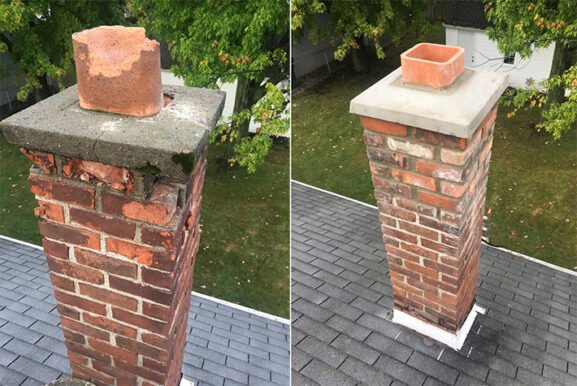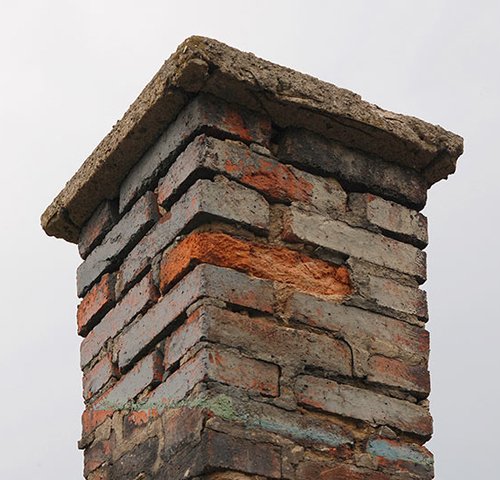Why Cement-Based Chimney Repairs Are Essential for Long-Term Masonry Health
Key Takeaways
- Chimney repair cement helps restore the structural integrity of damaged mortar joints and masonry surfaces.
- Choosing the right type of repair cement ensures compatibility with existing materials and improves durability.
- Early cement repairs prevent moisture intrusion, freeze-thaw damage, and costly structural issues.
- Cement-based maintenance can extend the life of your chimney and reduce future repair needs.
Understanding the Role of Chimney Repair Cement
Chimneys endure constant exposure to the elements, from wind and rain to seasonal temperature shifts. Over time, this exposure weakens the masonry and erodes the mortar joints. This is where chimney repair cement comes into play.
Chimney repair cement is a specially formulated bonding material used to patch, seal, and rebuild sections of a chimney structure. It’s thicker than standard mortar and designed to handle high temperatures, resist weather damage, and bond tightly to brick, stone, and concrete surfaces.
When applied properly, this cement can fix cracks, seal gaps, and reinforce weakened areas without the need for a full rebuild. It’s often used in tuckpointing, crown repairs, firebox restoration, and sealing gaps in the flue or chimney cap.
Signs Your Chimney May Need Cement Repairs
Many homeowners are unaware of chimney damage until the signs become obvious. Knowing what to look for can help you address issues before they worsen. These signs include:
- Visible cracks between bricks or stones
- Crumbling mortar or fallen debris around the chimney base
- Water leaks near the fireplace or chimney wall
- Discoloration on the bricks from water or smoke
- A leaning or misshapen chimney stack
These are more than cosmetic problems. Gaps in the mortar or cracked cement allow moisture to seep in, which can freeze and expand during colder months, worsening the damage. Acting quickly to address these symptoms with chimney repair cement can save thousands in future repairs.
Choosing the Right Type of Chimney Repair Cement
Not all repair cements are created equal. The selection depends on the scope and type of repair needed. For example:
- High-heat refractory cement is ideal for repairing fireboxes or areas exposed to open flame.
- Hydraulic cement is often used for sealing active water leaks due to its fast-setting, water-resistant properties.
- Masonry crack filler or mortar repair compounds work best for patching hairline cracks or gaps between bricks.
Professional masons will assess the type of masonry and environmental exposure before selecting the most appropriate product. Using the wrong type of cement can lead to weak bonds, poor sealing, or future damage due to incompatibility with original materials.
The Repair Process Step by Step
While some small repairs can be DIY-friendly, many cement repairs require professional skill and knowledge. Here’s a breakdown of how professionals typically carry out chimney repair cement applications:
- Inspection and Cleaning
The chimney is assessed for structural soundness, and all loose debris or deteriorated mortar is removed. The surface is then cleaned to ensure good adhesion. - Preparation of Cement
The selected chimney cement is mixed according to the manufacturer’s directions, considering the ambient temperature and humidity levels. - Application
The cement is applied using trowels or specialty tools, carefully pressed into joints or cracks. In crown or flue repairs, cement may be shaped to ensure water runs off instead of pooling. - Curing
Proper curing is crucial. The cement must be allowed to dry slowly to form a strong, lasting bond. Some materials cure faster, while others may take a day or more. - Finishing and Inspection
After curing, the work is inspected for proper bonding and alignment. Waterproofing treatments may also be applied for added protection.
This process ensures the repaired sections remain structurally sound and resistant to moisture infiltration.
Common Mistakes to Avoid When Using Chimney Repair Cement
Using chimney cement might sound simple, but many common errors can compromise the repair:
- Skipping surface preparation: Dirty or dusty surfaces prevent the cement from bonding properly.
- Overfilling joints: This can lead to uneven pressure and cracking once the cement dries.
- Incompatible materials: Applying repair cement to incompatible surfaces can cause rapid deterioration.
- Ignoring weather conditions: Extreme heat, cold, or moisture can affect how well the cement sets and cures.
Working with experienced professionals ensures that materials are correctly selected and applied under the right conditions. According to the Chimney Safety Institute of America (CSIA), poorly executed chimney repairs can lead to flue blockages, water damage, or even fire hazards (source).
Why Timely Cement Repairs Matter
Delaying cement-based chimney repairs can result in bigger issues that affect your home’s safety and energy efficiency. As moisture seeps into damaged joints, it can erode surrounding bricks, leading to spalling, internal leaks, and even chimney collapse.
Additionally, a compromised chimney structure can hinder proper ventilation, trapping harmful gases like carbon monoxide inside the home. In regions with freeze-thaw cycles, untreated mortar damage rapidly worsens in winter, increasing both repair complexity and cost.
Early cement repairs help maintain the chimney’s weather resistance, reduce energy loss through gaps, and preserve the masonry’s integrity. Investing in small-scale repairs now can prevent large-scale rebuilds down the line.
Long-Term Benefits of Regular Cement Maintenance
Routine inspections and cement repairs are part of smart homeownership. By maintaining mortar joints and chimney crowns, you:
- Extend the life of your chimney system
- Improve home heating efficiency
- Protect against leaks and interior wall damage
- Preserve your home’s structural and aesthetic value
While chimney cement repairs may seem like minor tasks, they play a major role in protecting one of your home’s most exposed and essential features.
Strengthening Your Chimney Against Future Damage
Chimneys are vulnerable to everything from heavy rains to seismic activity, but regular inspections combined with cement-based repair strategies can reduce long-term damage. If your chimney shows signs of wear, especially in the mortar or crown, cement repair might be the ideal first step to restoring safety and function.
Professional masons can guide you on which areas need repair and what type of cement is best for your system. Whether you’re dealing with moisture intrusion, cracks, or general aging, taking action today can make a difference for years to come.

